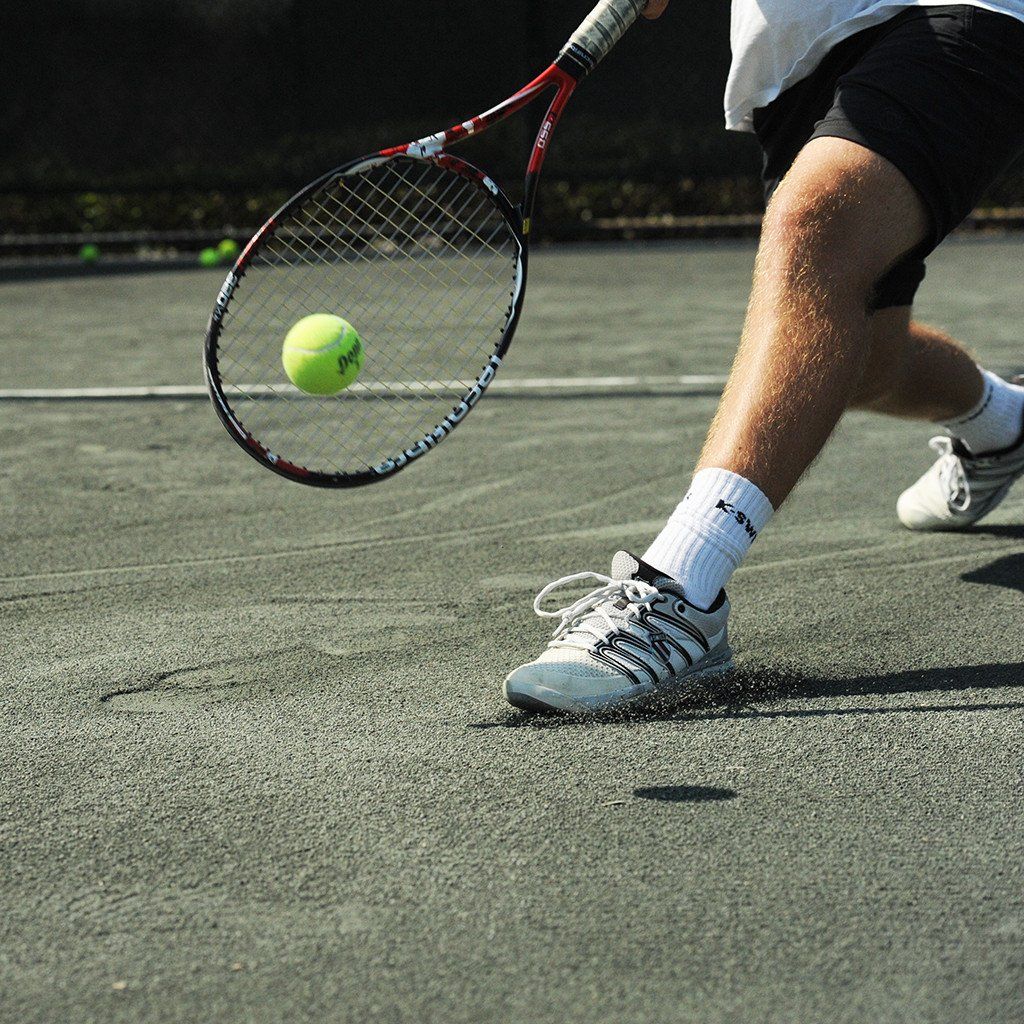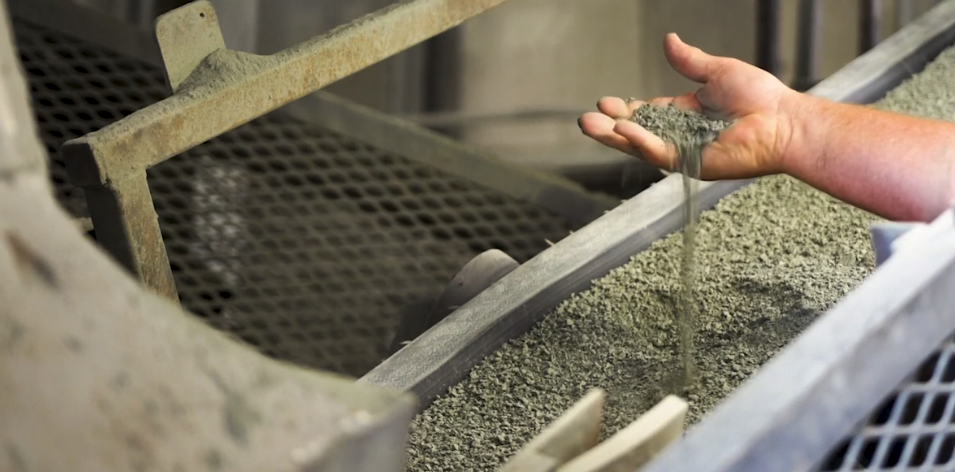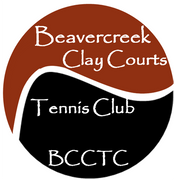Clay Court Tennis -- The Soft Choice

You’ve often seen the ice-pack trail of tennis players, both young and old, tending to their knees, elbows, shoulders and ankle injuries…especially knees. Many of these injuries are due to the repetition and intensity of stroke production and movement (both upper and lower extremities). When considering the long-term impact to a player’s physical longevity and endurance, soft courts provide a distinct advantage over hard courts.

Tennis players can choose to play on a variety of court surfaces such as hard (acrylic covered asphalt or concrete), clay (crushed shale, stone, or brick), grass (short grass on hard packed dirt), or carpet, rubber, polymeric courts. The majority of court surfaces within US tennis facilities are either hard or clay courts. Of the estimated 250,000 tennis courts in the US, 70% are hard, 14% clay, 1% grass and 15% other (carpet, rubber, polymeric, etc)1. Often the court surface chosen by a player is due to a lack of options or player preference due to the player’s strengths.
While injuries impact all tennis players, studies have shown that the type of court surface affects the types and frequencies of injuries. Overuse injuries often occur in the upper extremities such as tennis elbow, rotator cuff tendonitis and back sprains. Upper extremity tennis injuries are mostly chronic and result from repetitive use, irrelevant of the nature of the court surface. Traumatic injuries often occur in the lower extremities such as knee ligament or meniscus and Achilles tendon tears. Lower extremity injuries are mostly acute and result from traumatic events and are often due to a harder court surface2. Injury surveillance amongst elite tennis players during some US National Championships on hard courts, revealed that nearly 50% of all injuries were located in the lower extremities; an incidence almost twice that for the upper limbs and trunk and back3.
 If you want to play with less stress on your knees (and body), play on a clay court. Clay is considered the slowest surface due to friction of the clay. The clay court reduces the natural skid of the ball which tends to bounce up instead of skidding. A shot hit without spin will lose about 43% of its ground speed after contact with the clay surface thus having a bit less impact on your arm. A shot hit on a hard court will only lose about 23% to 28% of its ground speed4. A recent study5 indicates that the distance of player movement on a tennis court is around 30% higher on clay versus a hard court. Matches played on clay required players to cover more running distances, have fewer strokes per time interval, however still engage in more high-intensity activities than the matches played on a hard court. Therefore, a player will have a higher aerobic benefit when playing on clay surfaces.
If you want to play with less stress on your knees (and body), play on a clay court. Clay is considered the slowest surface due to friction of the clay. The clay court reduces the natural skid of the ball which tends to bounce up instead of skidding. A shot hit without spin will lose about 43% of its ground speed after contact with the clay surface thus having a bit less impact on your arm. A shot hit on a hard court will only lose about 23% to 28% of its ground speed4. A recent study5 indicates that the distance of player movement on a tennis court is around 30% higher on clay versus a hard court. Matches played on clay required players to cover more running distances, have fewer strokes per time interval, however still engage in more high-intensity activities than the matches played on a hard court. Therefore, a player will have a higher aerobic benefit when playing on clay surfaces.
 The granular surface of a clay court acts as a shock-absorbing cushion, allowing players to slide into their returns. This prevents the joint jarring stops that occur on hard surfaces. Pain and/or injuries are substantially lower on tennis surfaces that allow sliding (clay) compared to surfaces that do not allow sliding. Studies show that the differences in lower extremity injury frequency are directly related to the differences in the frictional properties of the surfaces6. The frictional characteristics of the tennis court–shoe interface are a major risk factor for lower extremity injuries in tennis. The injury frequency on clay is significantly lower than on hard courts. The surface with the higher frictional coefficient enhances the speed of the game but also induces more frequent injuries as players perform at a greater rate of acceleration, speed and torque, hyperextension and therefore greater potential muscle fatigue. 7 The loading of the lower extremities is smaller on surfaces that allow sliding than on surfaces that do not allow sliding. Surfaces that allow sliding are expected to have about 75% less lower extremity injuries than surfaces which do not allow sliding. 6
The granular surface of a clay court acts as a shock-absorbing cushion, allowing players to slide into their returns. This prevents the joint jarring stops that occur on hard surfaces. Pain and/or injuries are substantially lower on tennis surfaces that allow sliding (clay) compared to surfaces that do not allow sliding. Studies show that the differences in lower extremity injury frequency are directly related to the differences in the frictional properties of the surfaces6. The frictional characteristics of the tennis court–shoe interface are a major risk factor for lower extremity injuries in tennis. The injury frequency on clay is significantly lower than on hard courts. The surface with the higher frictional coefficient enhances the speed of the game but also induces more frequent injuries as players perform at a greater rate of acceleration, speed and torque, hyperextension and therefore greater potential muscle fatigue. 7 The loading of the lower extremities is smaller on surfaces that allow sliding than on surfaces that do not allow sliding. Surfaces that allow sliding are expected to have about 75% less lower extremity injuries than surfaces which do not allow sliding. 6
So the more time you spend playing tennis on a clay court versus a hard court, the greater the chance that you will avoid knee injuries. The International Tennis Federation makes this same suggestion for players with knee injuries8. Senior tennis players have fewer knee problems if they have spent most of their tennis careers on clay courts.
I close with a quote from a gifted clay court tennis player, “Personally, I find playing on clay much easier on my creaky old joints. I can play almost twice as long on clay as I can on hard courts. As far as falling, I agree that I tend to fall more on clay, but that is probably because I tend to be more "adventurous" in my attempts to reach shots on clay. Plus, falling on clay results in simply dusting myself off and continuing with the match. Falling on a hard court can ruin my day.”9
Steve Hayden
Beavercreek Clay Courts Tennis Club
References
1. Tennis Construction FAQ ; American Sports Builders Association, 2018, https://www.sportsbuilders.org/faq.cfm#tennis10
2. The Activity Profile of Young Tennis Athletes Playing on Clay and Hard Courts; Sciendo, Vol 50:
Issue 1, Apr 2016; https://content.sciendo.com/view/journals/hukin/50/1/article-p211.xml
3. Effects of the playing surface on plantar pressures and potential injuries in tennis; British Journal of Sports Medicine, Jun 12, 2007, https://www.ncbi.nlm.nih.gov/pmc/articles/PMC2465293/#ref10
4. The Physics of Grass, Clay, and Cement; Jonah Lehrer, 8 Sep, 2011; http://grantland.com/features/the-physics-grass-clay-cement/#fn-3
5. Upper Extremity Injuries in Tennis Players; PMC US National Library of Medicine, National Institutes of Health, Feb 2017, 33(1): 175-186, https://www.ncbi.nlm.nih.gov/pmc/articles/PMC5125509/
6. Injury & Performance on Tennis Surfaces; HPL – Calgary, Dr. Benno Nigg, Canada, Nov 2003, http://citeseerx.ist.psu.edu/viewdoc/download?doi=10.1.1.562.7887&rep=rep1&type=pdf
7. The influence of playing surfaces on tennis injuries; Sports Med, Jun 1988
8. Knee Pain: Injury Clinic, 2018, https://www.itftennis.com/scienceandmedicine/injury-clinic/tennis-injuries/kneecap.aspx
9. Talk Tennis; dcottrill, 2008 https://tt.tennis-warehouse.com/index.php?threads/injuries-clay-court-vs-hard-court.202709/
About the Business
Have a question? Ask the experts!
Send your question

